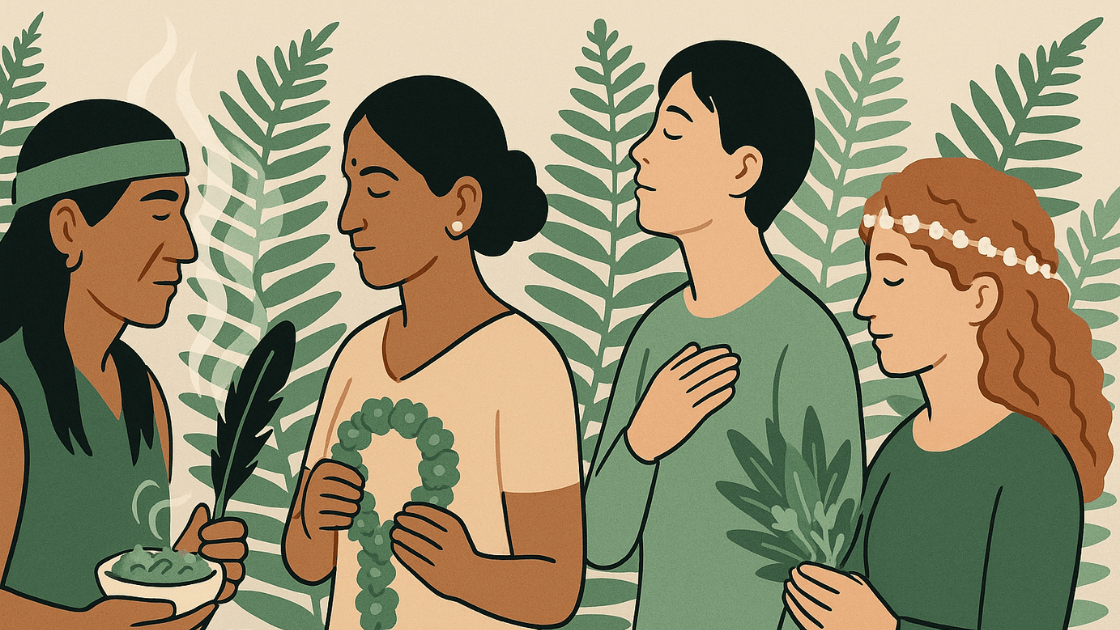
In this final part of my seasonal healing series, we’ve reached the turning point of summer. This is the moment where the Earth begins to tip toward autumn, even if the sun is still shining. Known as Lammas or Lughnasadh, this Celtic festival marks the first harvest, a time to give thanks for what has grown and begin gathering in what we’ve sown, both literally and metaphorically.
Lughnasadh is rooted in ancient traditions from the British Isles, especially Ireland and Scotland, where my own ancestry lies. The word “Lammas” comes from the Old English “loaf mass,” a Christianized version of older harvest customs. Traditionally, people would bake bread from the first grain harvest and bring it to church as an offering. But before Lammas became part of Christian calendars, it was celebrated in older Celtic traditions as Lughnasadh, named for the god Lugh, a warrior, poet, and craftsman associated with light and skill. Festivals in his honor were held in late July or early August and often included games, feasting, matchmaking, and gatherings on hilltops or near sacred wells.
Beyond the myths and customs, Lughnasadh speaks to something very human and universal: the need to pause, reflect, and give thanks. It invites us to acknowledge our own inner harvests by looking at what has come to fruition in our lives, what we’ve worked hard to grow, and what is ready to be received with gratitude. It is also a moment to release what didn’t grow or come to pass and to honor that with just as much reverence.
Two years ago, I decided to honor Lughnasadh for the first time. I had been slowly deepening into these ancestral rhythms, but this was the first festival I marked in a tangible and heartfelt way. My sister and I went to the water and brought flowers. We stood quietly together and named the things we were grateful for, the things we had worked for that year. It was simple, but something about the ritual felt steadying, like I was tapping into something older than myself.
Not long after we arrived, we noticed two other women down the shoreline. They had flowers too and were doing their own version of a ritual—quiet and intentional. We didn’t speak, but witnessing one another in that space made something clear. These old ways aren’t lost. They’re still alive, still moving through us, even now. And somehow, without needing to coordinate or explain, we had all found our way back to them.
So how can you celebrate Lughnasadh? It doesn’t need to be elaborate. The heart of this festival is gratitude, reflection, and grounded presence. Here are a few ways you might mark the season:
- Bake something with your hands. Bread is traditional, but anything that connects you to the grain harvest or the act of creation works beautifully.
- Offer something back to the Earth. A flower, a prayer, or a song at the water’s edge. Seasonal blooms like marigold, sunflower, cornflower, heather, and goldenrod are often used in Lughnasadh celebrations. You might place them into a stream, onto the soil, or leave them beneath a favorite tree.
- Harvest what you’ve grown. This could mean vegetables from your garden, or the fruits of your labor in work, healing, or relationships. Take a moment to acknowledge it.
- Write down what you’re grateful for and what you’re releasing. Burn the paper, bury it, or release it into a stream. Let the act carry intention.
- Gather. Whether with one person or many, connection is at the root of all seasonal rituals. Share food, stories, or silence.
These seasonal rituals are more than poetic moments in the year. They can also be part of a decolonized therapeutic practice—one that honors ancestral wisdom, reconnects us with land and body, and invites reflection through rhythm rather than urgency. Lughnasadh offers a chance to pause and notice what has already taken root. It reminds us that healing doesn’t always mean doing more. Sometimes, it means recognizing what’s already here.
Lughnasadh reminds us that we are not separate from nature. We are part of its cycle. We plant seeds, we grow, we struggle with weeds, and we gather what we can. We celebrate what came to be and mourn what didn’t. It’s messy and beautiful and very human.
And we do it again, year after year. Together.

